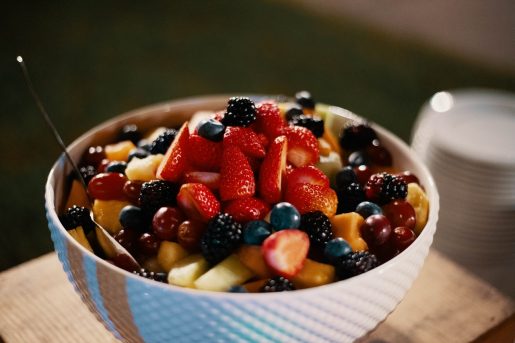Debating Diets: What is the volumetrics diet?

Thinking about starting a new diet? While the amount of information available can be overwhelming, it’s possible to find a diet that is safe, suitable and effective for your lifestyle.
Rachel Griehs, senior registered dietitian with the Weight Loss and Metabolic Center at Baylor Medicine, discusses what you need to know about the volumetrics diet.
What is the volumetrics diet and how does it work?
Created by Barbara Rolls, Ph.D., this eating plan focuses on eating larger portions of low-calorie foods (fruits and vegetables) and limiting higher-calorie foods (dairy and meat). Adding water to the food gives it more (zero) density. The goal is to eat lower energy density foods, by adding volume, (soups and smoothies), or eating food containing high amounts of water, (cucumbers and watermelon).
What are the recommended foods? Discouraged foods?
This eating plan separates foods into four categories:
- Category one: Low-calorie foods that you can freely eat, such as fruits and non-starchy vegetables.
- Category two: Whole grains, lean protein and low-fat dairy. These can be eaten in moderate (reasonable) portions.
- Category three: Foods which should be eaten in much smaller portions, such as breads and fattier meats.
- Category four: Highest calorie-dense foods and should be the most limited, including desserts, roasted nuts, and high-fat meats. It’s also recommended to consume protein throughout the day.

What are the nutritional benefits of this diet? Can it help with weight management?
The foods you can eat the most of on this plan are some of the healthiest. Because it focuses on fruits and vegetables, you will get the vitamins, minerals, plant compounds, and fiber in your diet. The fiber will help your feel full so you can lose weight without feeling hungry.
This eating plan is great for those who are looking for long term sustainable weight loss. You don’t feel hungry or deprived! It’s a great option for many because it is not so restrictive.
This plan also encourages moving more, with the recommendation of 10,000 steps per day.
Who should avoid this diet?
Those who require high-calorie, high-fat diets or athletes that need more carbohydrates for performance. Otherwise it is a great, non-restrictive eating plan.
Are there any physiological changes or side effects?
This diet is high in fiber, so feeling full on less food is a good side effect. Because of the higher fiber content, it also helps with bowel regularity.
What else should people know before considering this diet?
A drawback to this eating plan is that it encourages a low consumption of healthy fats, such as nuts, seeds, avocado, and olive oil, because they are calorically dense. These foods provide monounsaturated fats and omega-3 fatty acids that are good for cardiovascular health.
In addition, it may be harder to dine out. Many foods are prepared with high-calorie, high-fat butters and oils.
Additional Resources
Debating Diets: What is the vegan diet?
See more from the Debating Diets series.
-By Nicole Blanton




Interesting. Reminds me of the South Beach Diet with which I was stack forever and lost 60 lbs in 4 years.
possible to follow this diet